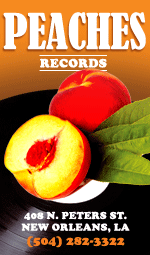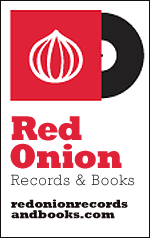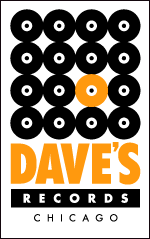
Credited to tenor saxophonist Eddie “Lockjaw” Davis with organist Shirley Scott, Craft Recordings’ 4LP/4CD/digital set Cookin’ with Jaws and the Queen: The Legendary Prestige Cookbook Albums offers 23 tracks cut during three 1958 sessions recorded by Rudy Van Gelder and first released as three separate Cookbook volumes and the Smokin’ LP between ’58–’64. The 180 gram vinyl is limited to 5,000 copies with the records housed in individual jackets replicating those original sleeves. The CD edition has three bonus tracks from the same sessions. The music is early soul jazz personified, in stores February 3.
A curious jazz newbie might be wondering if this set is an overabundance of goodness. To which I will retort that Cookin’ with Jaws and the Queen offers thorough documentation of a sharp as brass tacks quintet from inside a concise timeframe; the first session occurred on June 20, the second on September 12, and the third on December 5 of 1958, with Davis and Scott joined by Jerome Richardson on flute, tenor, and baritone sax, George Duvivier on bass, and Arthur Edgehill on drums.
For this reissue, Davis and Scott are given equal credit, and deservedly so, but on initial release it was the saxophonist who received top billing, which is also understandable, as Scott was relatively new on the scene while Davis had been a member of Count Basie’s orchestra twice, along with cutting a string of records as leader or co-leader, as was the case with The Battle of Birdland with fellow tenor Sonny Stitt, issued in 1955 by the Roost label.
But in fact, Scott was indeed given a “Featuring” credit on two prior albums with Davis’s trio (with Duvivier and Edgehill), one released by Roost and the other by Roulette, both in ’58. What this imparts is how the addition of Richardson deepened a core that was already rock solid through experience. This is vitally important, as the group knocked out 26 tracks in three days spaced out over half a year.
Alternating between Davis-Scott originals and jazz standards, the material falls squarely into the soul jazz comfort zone, but from an early vantage point that’s not as greasy and steamy as later organ combos, although there is a food motif that extends to many of the track titles. But the reality is that circa 1958, Davis, Scott and company were helping to establish the soul jazz form (before the style handle was in common usage) rather than launching from a codified genre platform.
A decade later, soul jazz combos regularly dispensed with bass players (as the organist took care of the bottom end with foot pedals) and replaced horn players with electric guitarists. Cookin’ with Jaws and the Queen isn’t embryonic (or even reserved in comportment), but it is reflective of its decade in how it blends R&B, Modern Jazz, Swing-era elements, blues and most importantly, gospel, which is really where the Soul in soul jazz derives.
Scott is the music’s strongest link to the church, but with a lack of hesitancy in her grooving. She does hang back at times, allowing Davis and Richardson the spotlight. Less flute would’ve been preferable, but as flautists go, Richardson is a good one, lacking the annoying mannerisms that plague the puffing of many of his peers.
Edgehill and Duvivier are clearly in the support role, and neither falter, but Duvivier’s very presence does alter the shape of the proceedings, again, in comparison to how the genre developed. Overall, there are firm nods to jazz classicism here rather than anything overtly proto-funky, though Davis had obviously walked a few bar tops in his lifetime.
There used to be a common tendency to belittle jazz of this sort as unambitious even when appreciating the execution, but it seems those days have largely passed. And that’s cool. Soul jazz is a difficult style to pull off consistently, but that’s exactly what Davis, Scott and company do across the eight sides of Cookin’ with Jaws and the Queen.
GRADED ON A CURVE:
A-












































